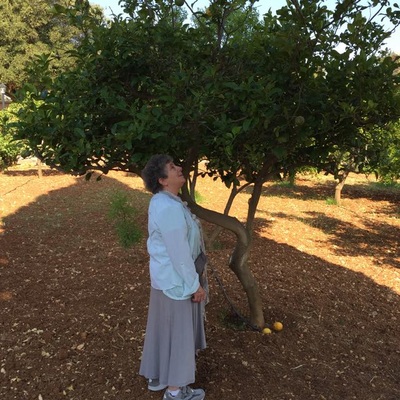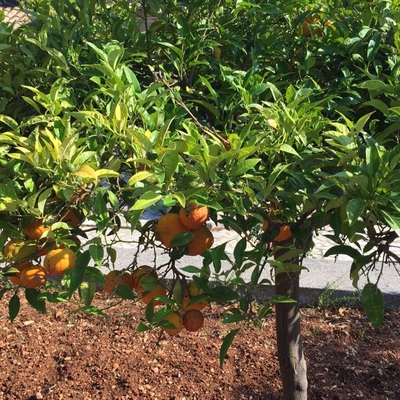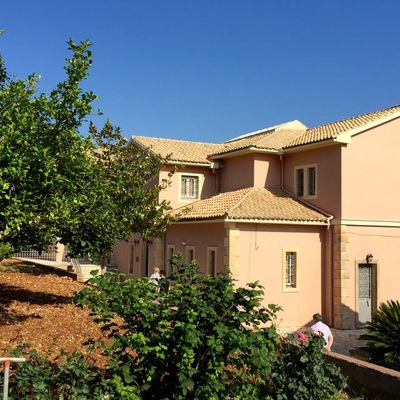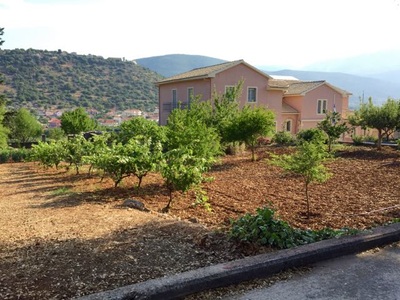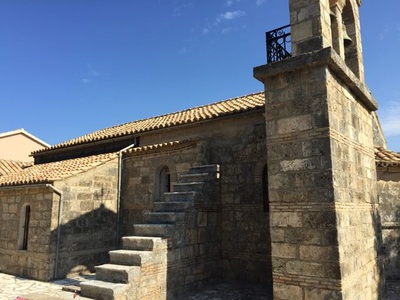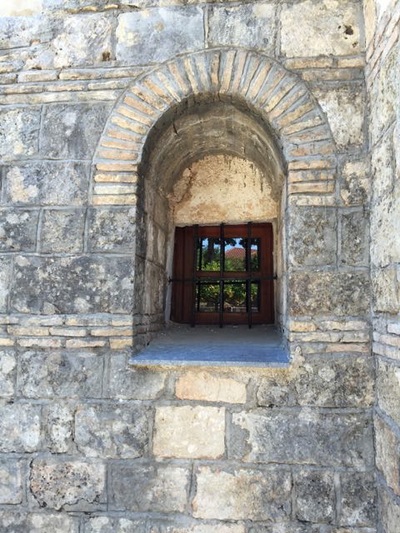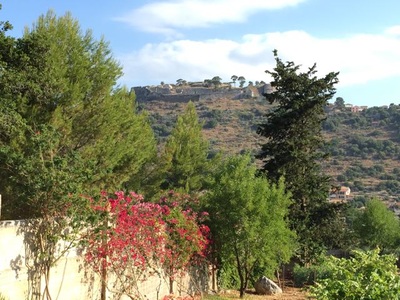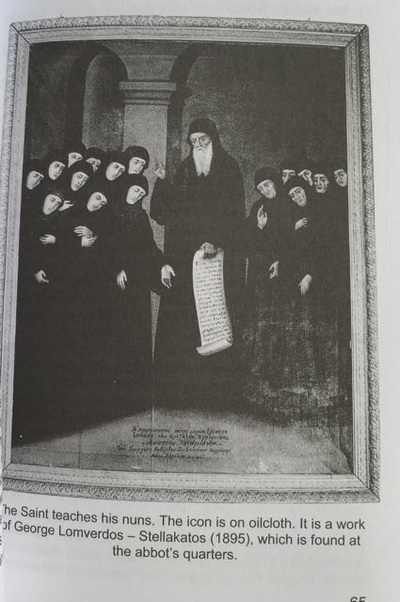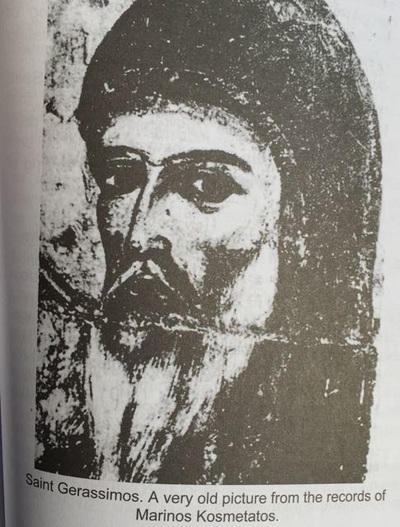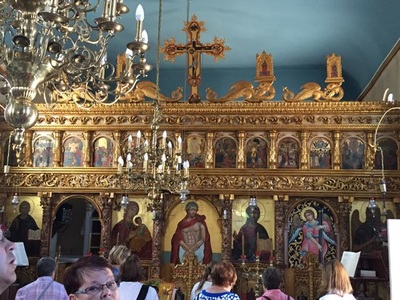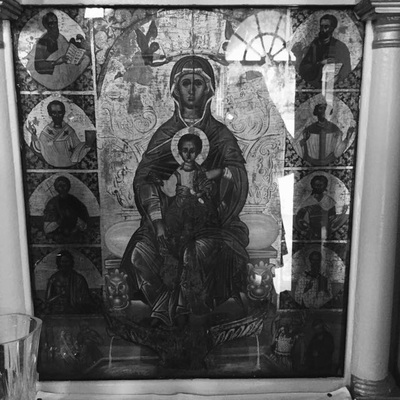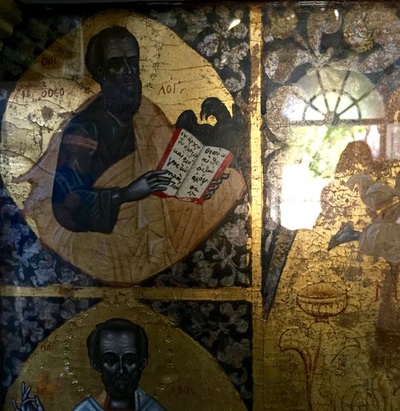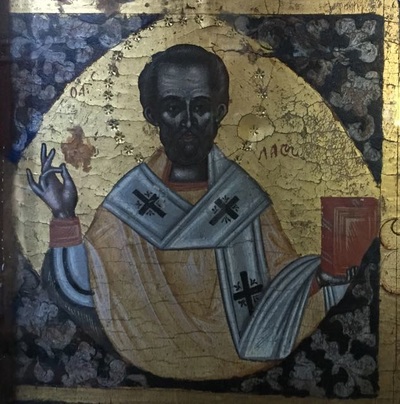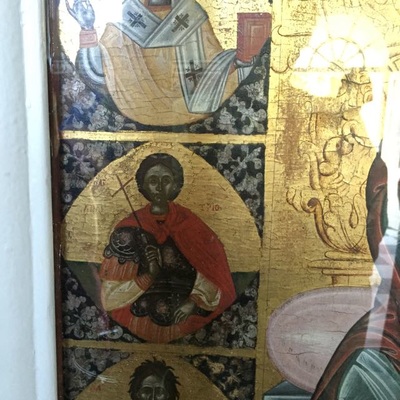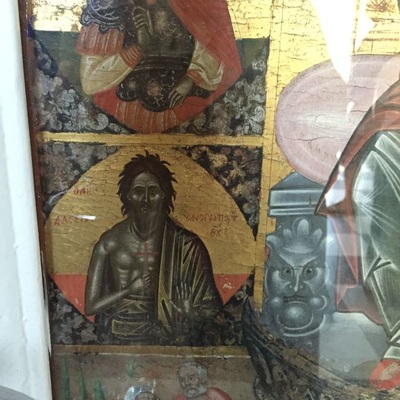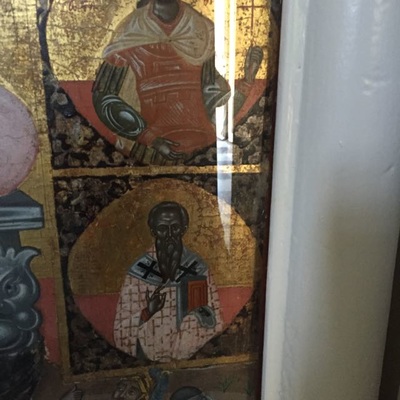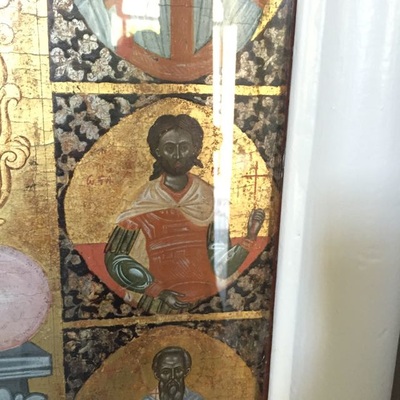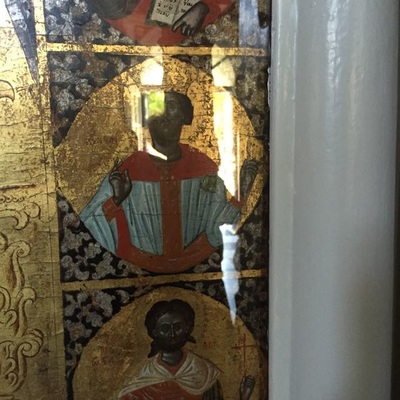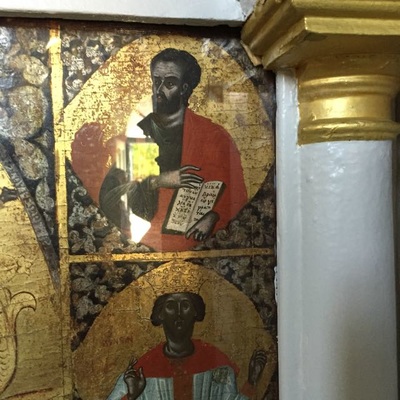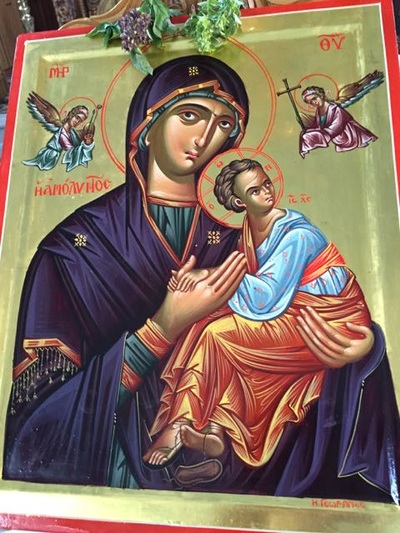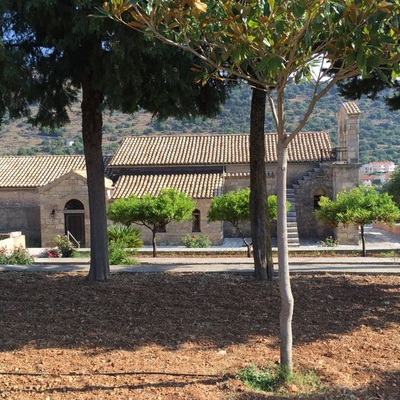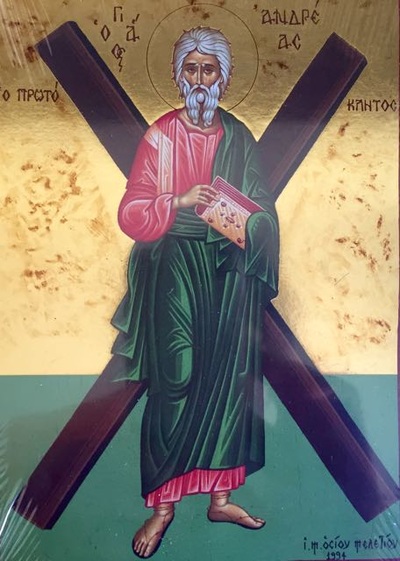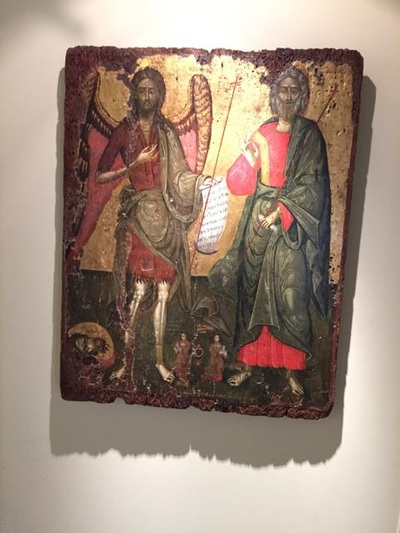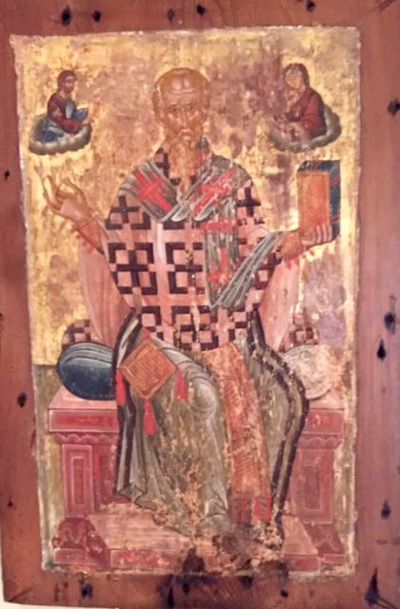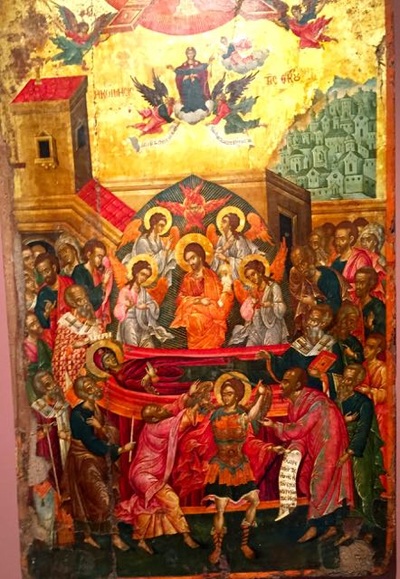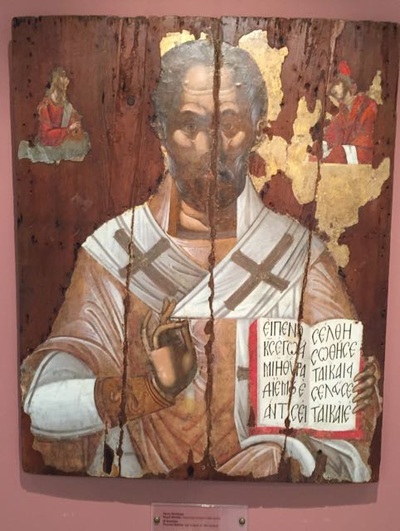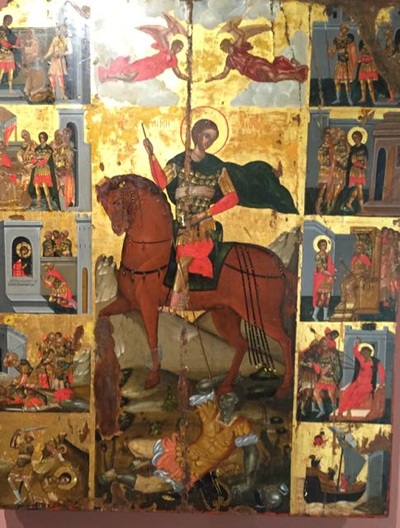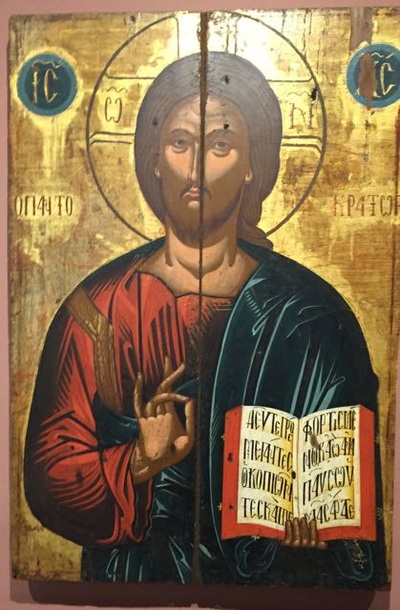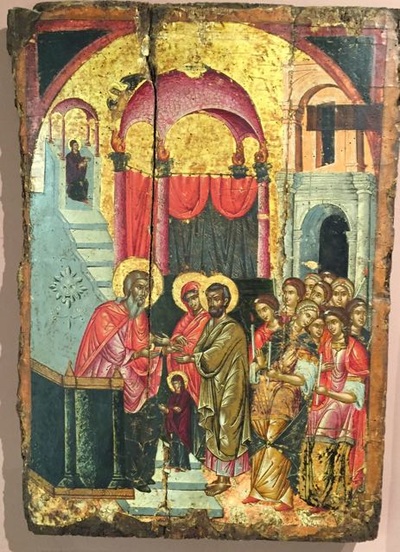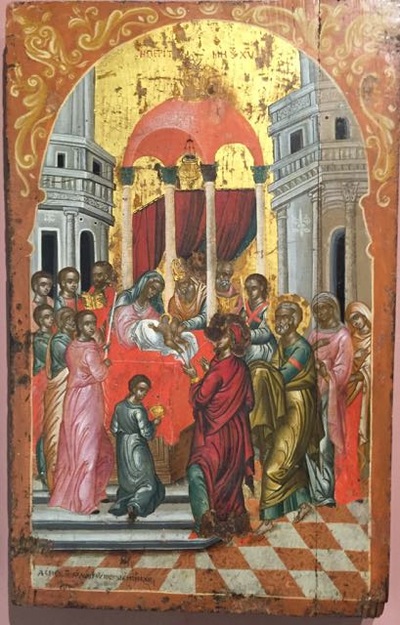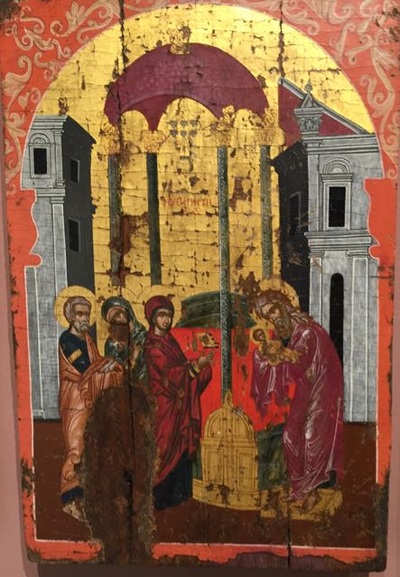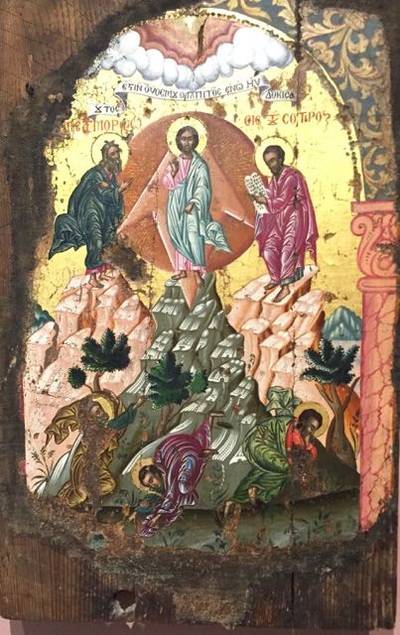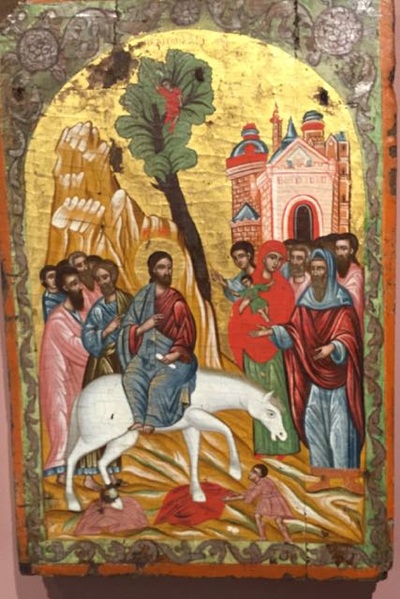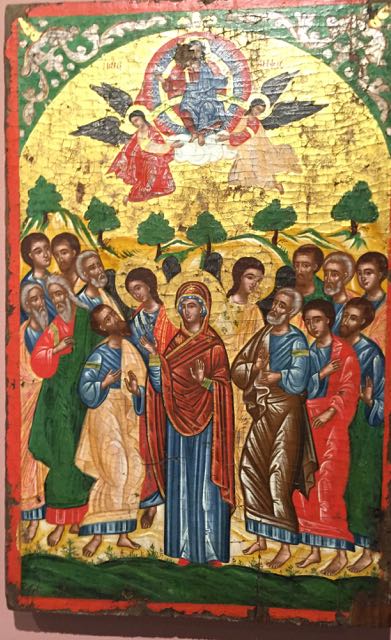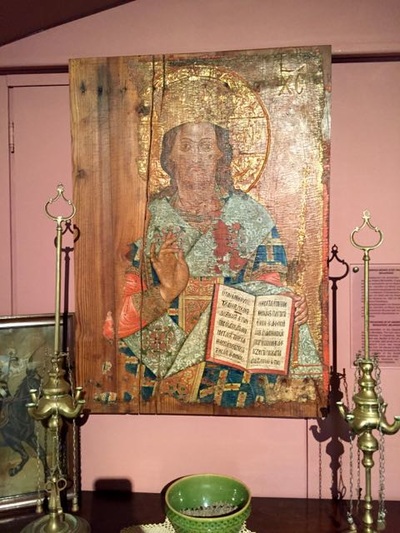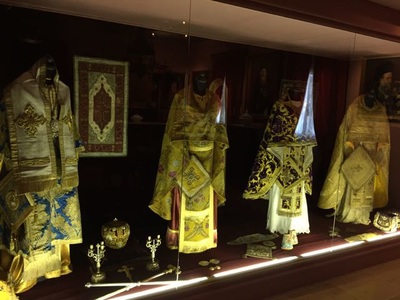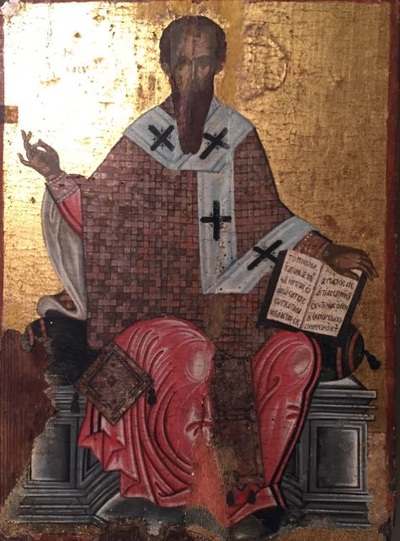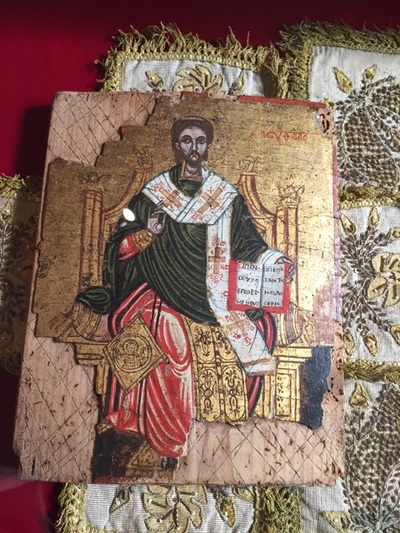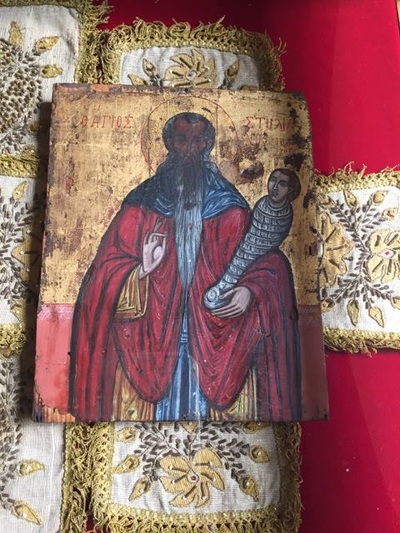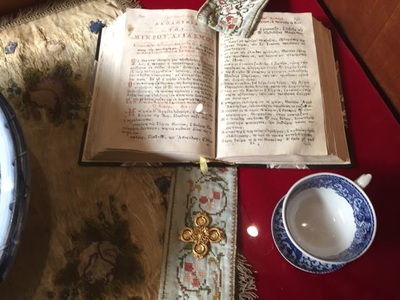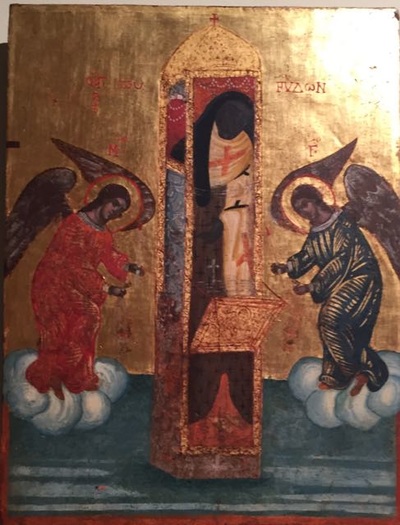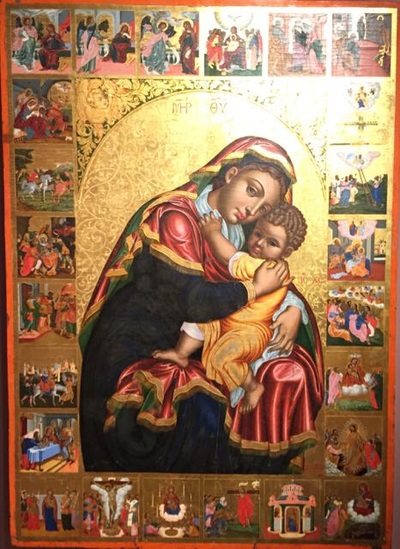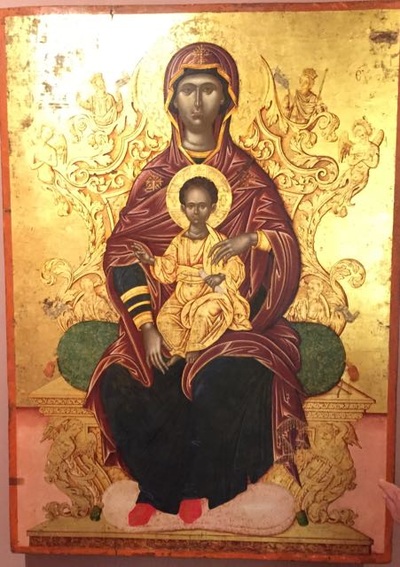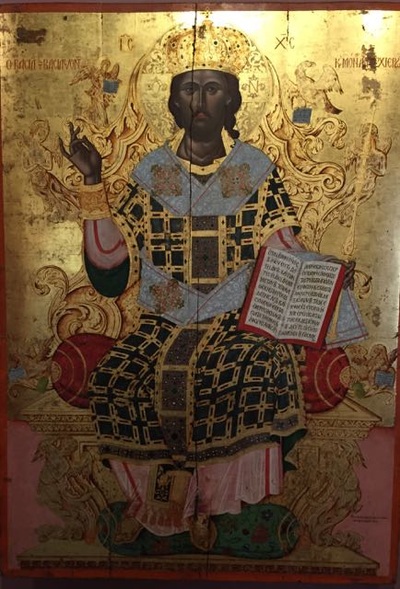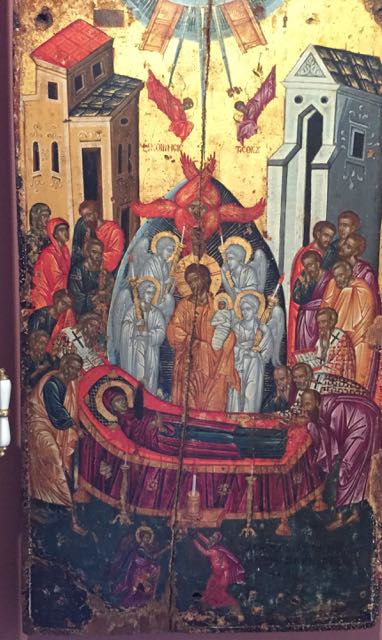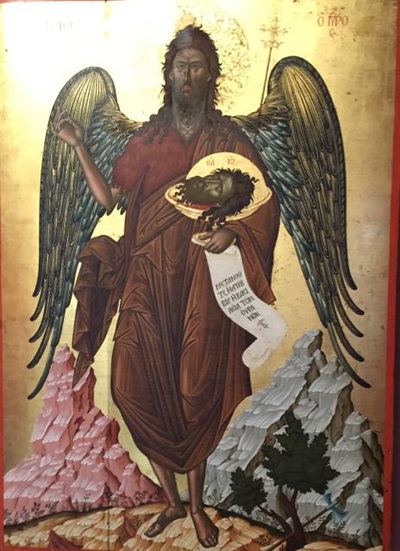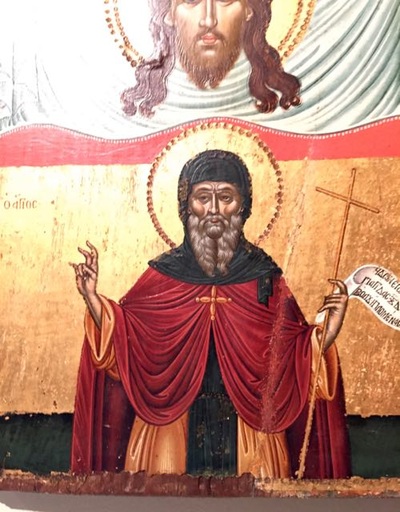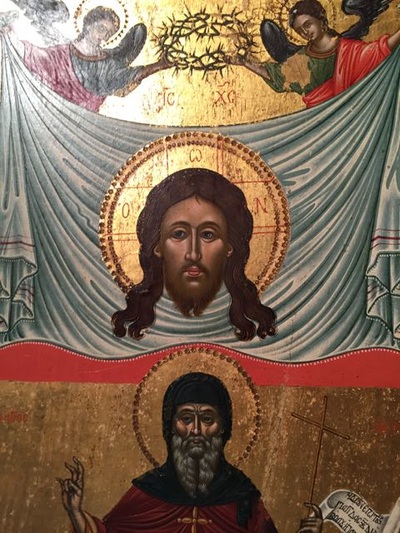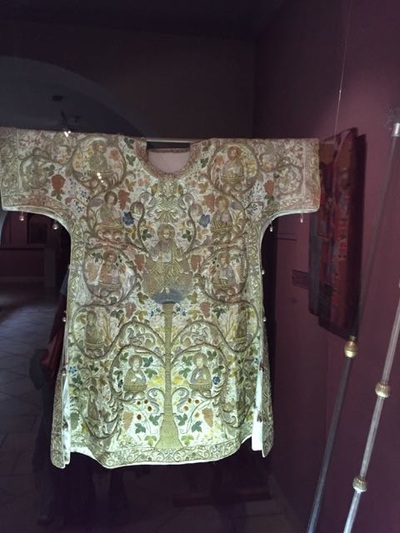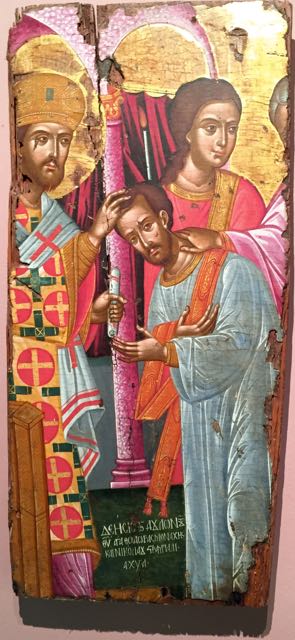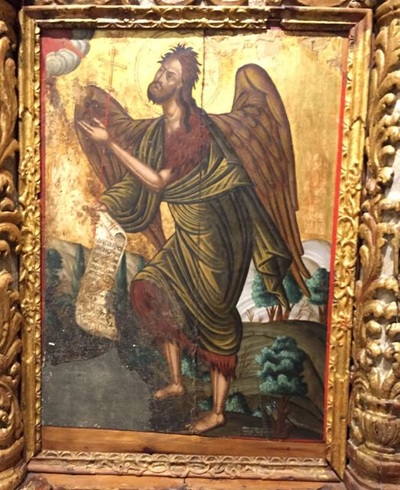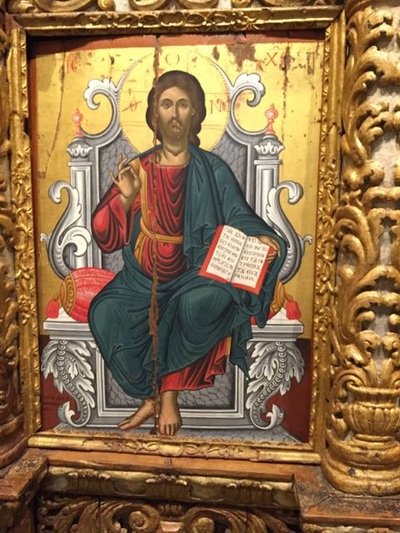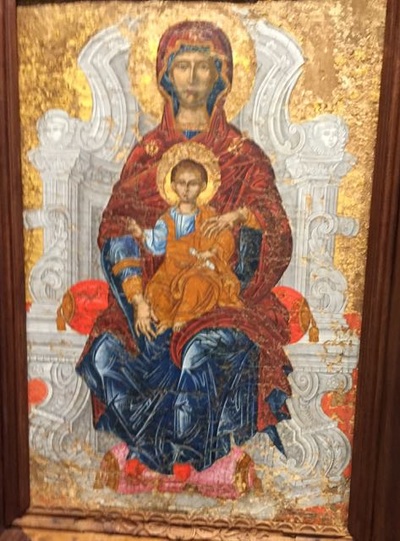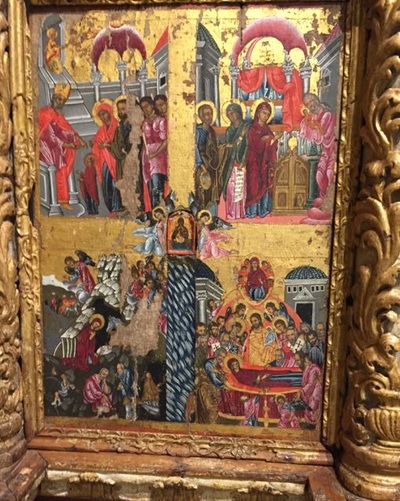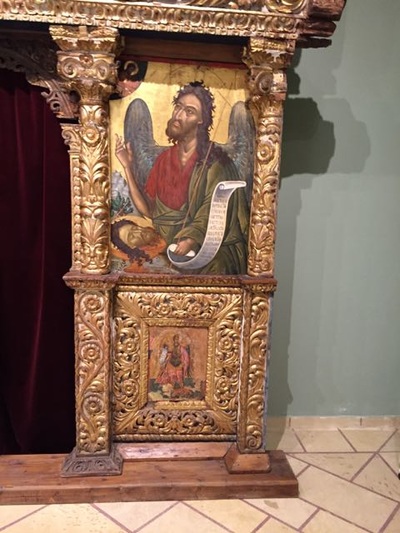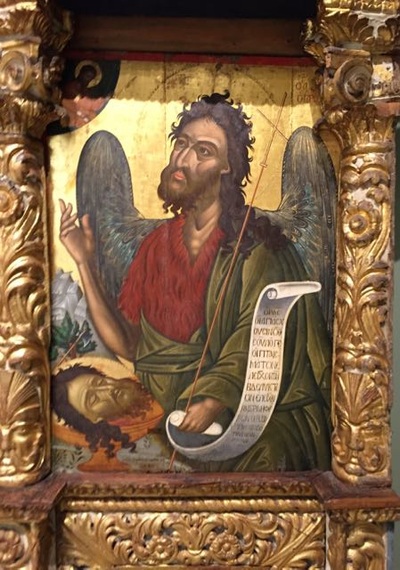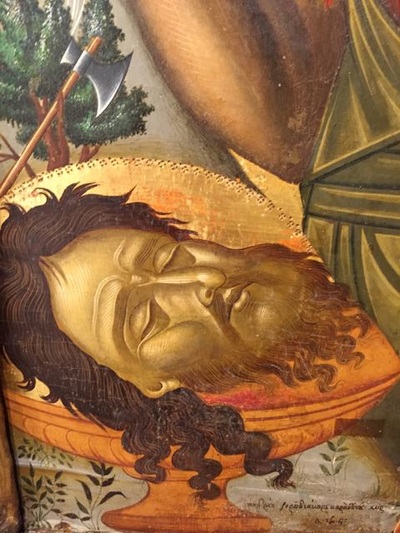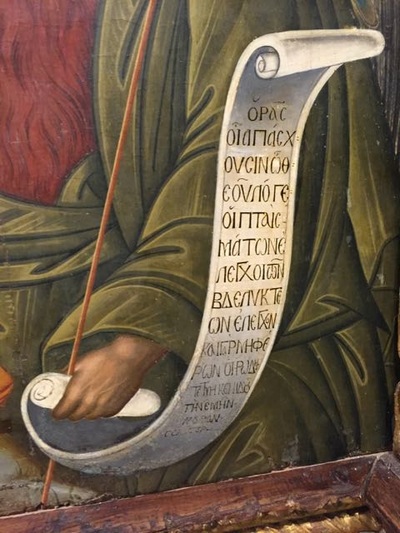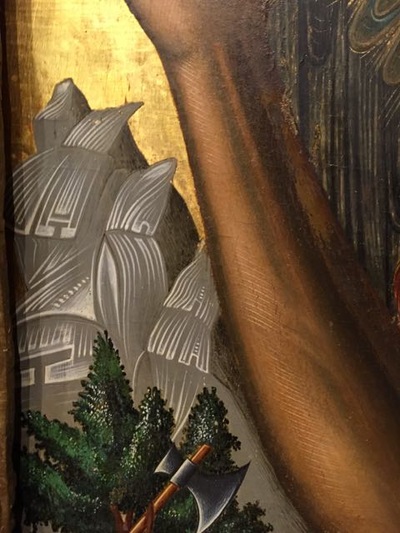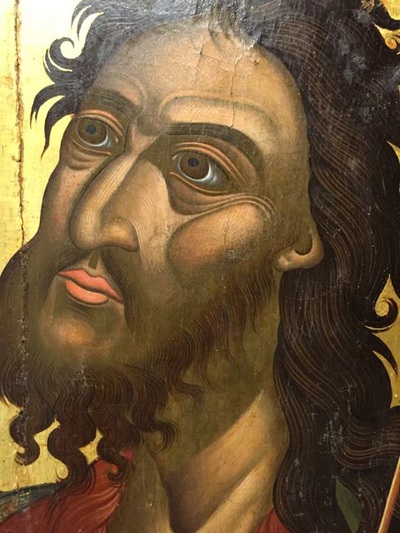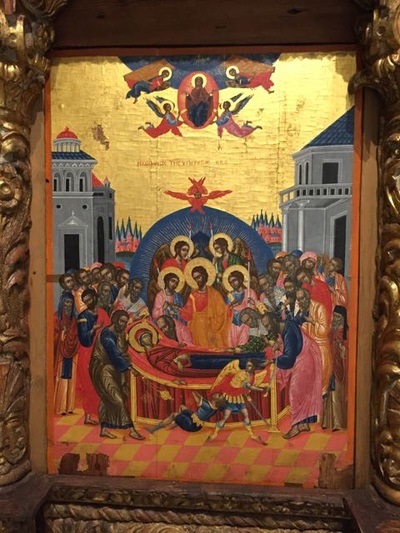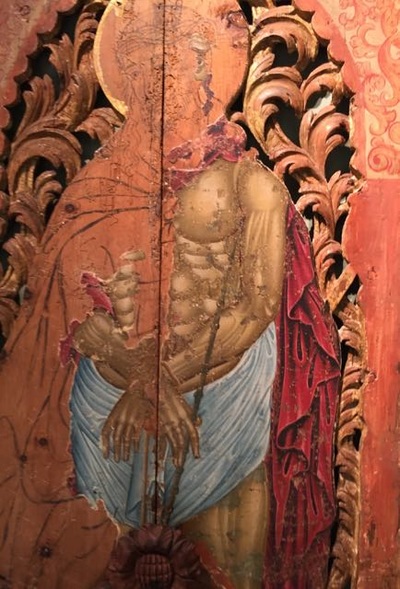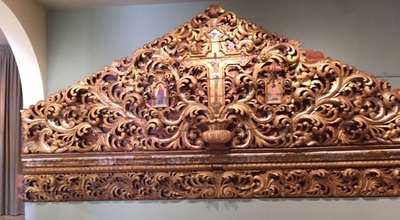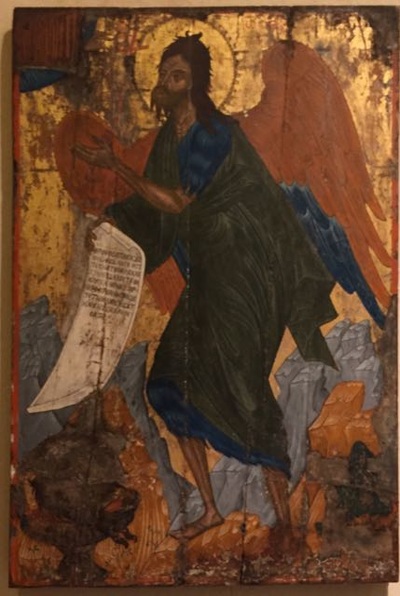Monastery of St. Andrew and its Ecclesiastical Museum
* Note: this page is still being developed
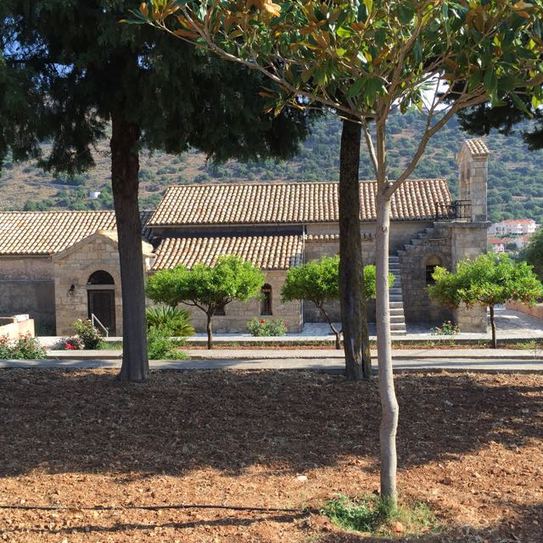
Just as we were stunned by the breadth of the Byzantine treasures in Thessaloniki no one expected the depth of the panel icons, frescos and church items we encountered at the Monastery (Convent) of St. Andrew in Peratata, ten miles south of the Monastery of St. Gerasimos. The monastery dates back to the Byzantine era (13th c). It foundered over time, but three local nuns, Sisters Benedict, Leondia and Magdalen, privately reestablished the convent in 1579, In 1630 a Greek-Romanian princes, Roxanne, contributed a sizable amount of money to revitalize the monastery; she also took vows and came to live there. It is said that she brought the relics (right foot) of the Apostle Andrew, to whom the monastery is dedicated, from Mt. Athos. His feast day is celebrated here on November 30 and again on the Friday of Pascha for the feast of the Life-Giving Font. There are several chapels at the monastery dedicated to:
Architecturally the site is not as historical as other places on our itinerary but there are some interesting features. The many trees and the landscaping are meticulously cared for by the nuns.
- the Archangels Michael and Gabriel
- Saint Nikolaos Skardabelis
- Saints Catherine and Paraskevi
- Theotokos Eleousis- “Axion Esti”
Architecturally the site is not as historical as other places on our itinerary but there are some interesting features. The many trees and the landscaping are meticulously cared for by the nuns.
The gallery of photographs below are not all identified because we did not have time to copy the names and dates of each item, but they are presented here to show the amazing relics of the Byzantine and post-Byzantine periods. There were also no books available to help us name these images. They are in no particular order. Hopefully in time we will be able to identify and date each piece.
